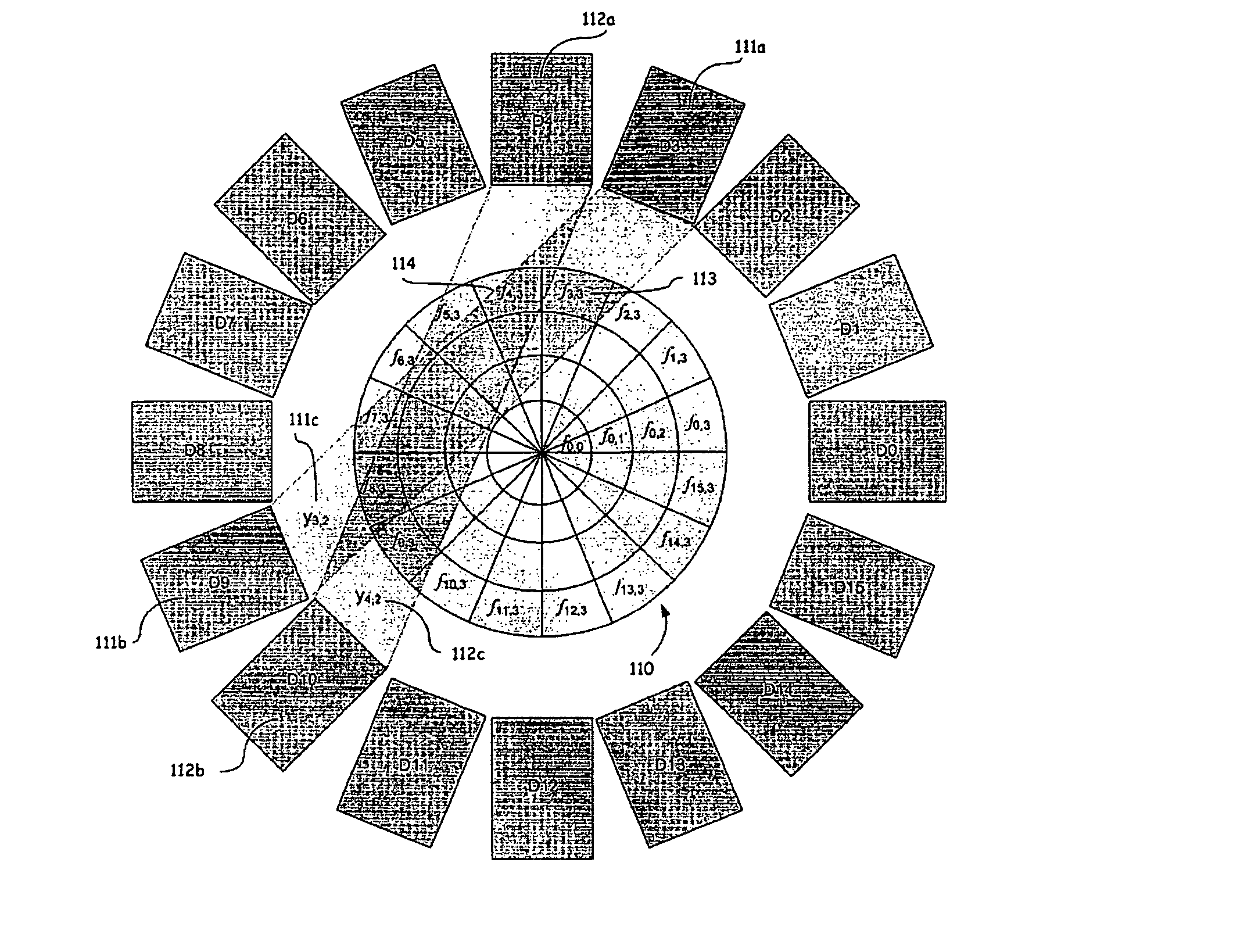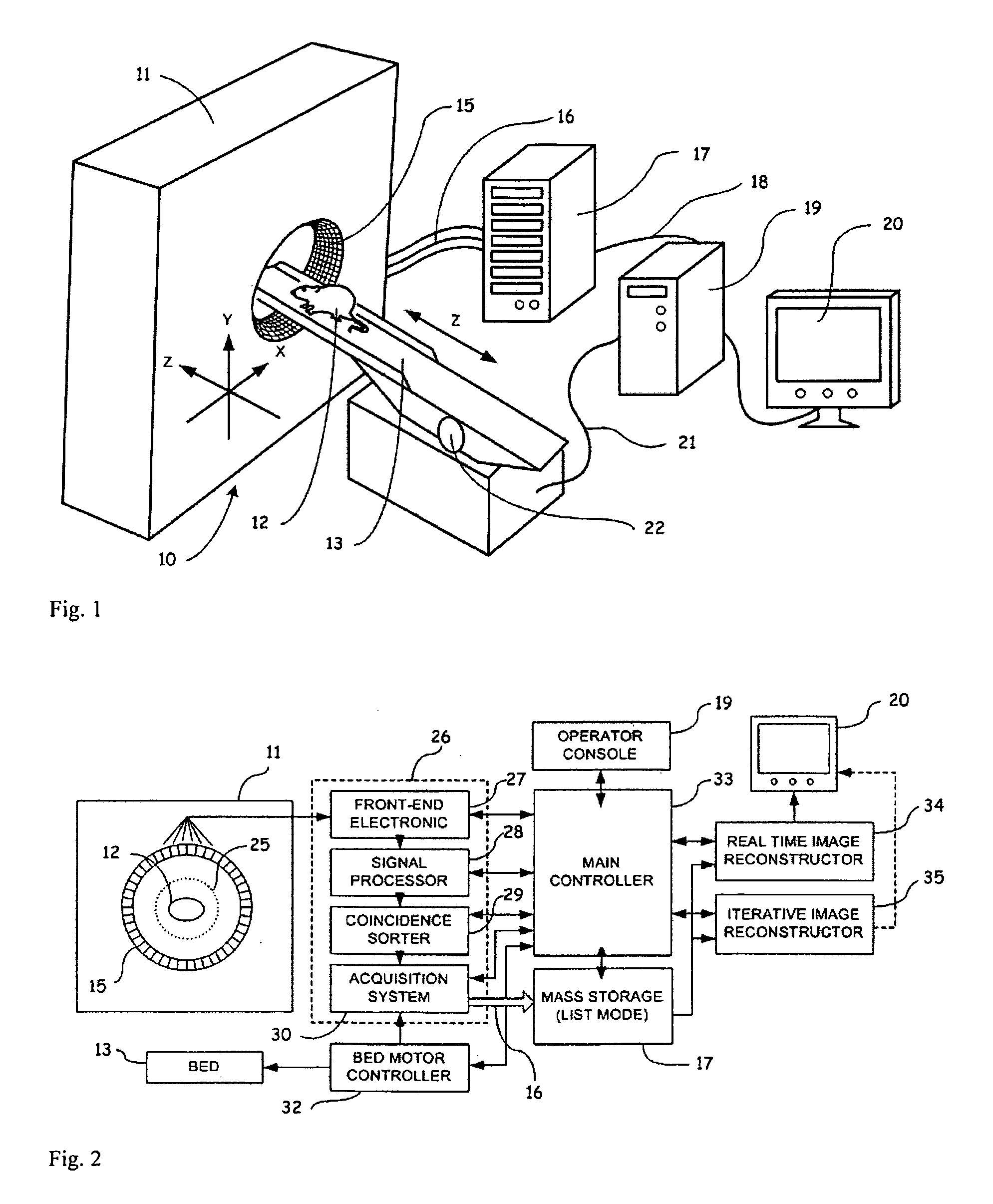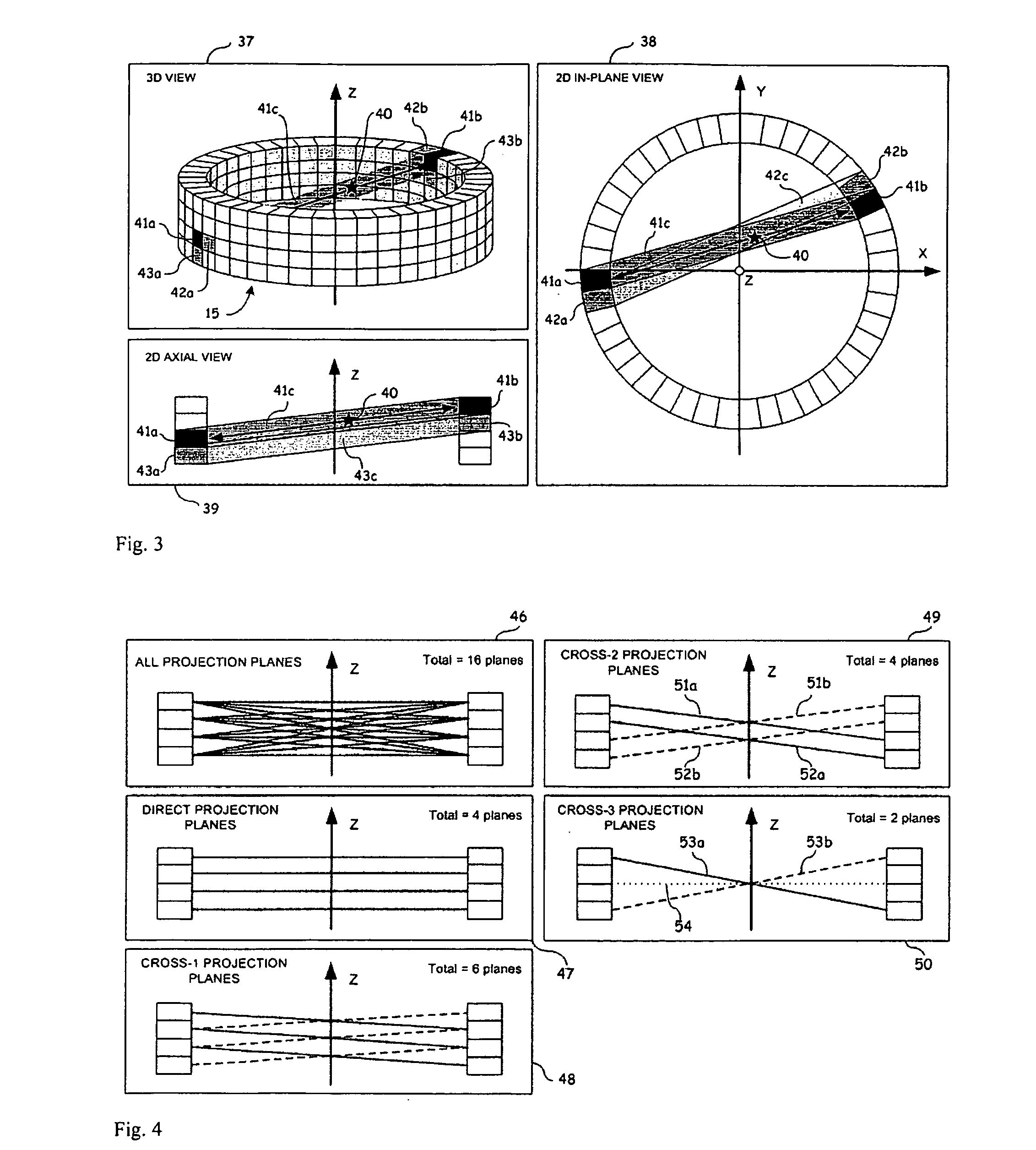Image reconstruction methods based on block circulant system matrices
a circulant system and image reconstruction technology, applied in the field of image reconstruction, can solve the problems of high condition number (cn), false detection, and misplacement of radioactive objects in the reconstructed image, and achieve the effect of reducing the size of the system matrix
- Summary
- Abstract
- Description
- Claims
- Application Information
AI Technical Summary
Benefits of technology
Problems solved by technology
Method used
Image
Examples
Embodiment Construction
[0063]Generally stated, a non-restrictive illustrative embodiment of the present invention provides for an imaging system and methods of computing image reconstructions using a system matrix that relates the measurements of the imaging system to the pixels (or voxels) of the image, wherein the pixels (or voxels) are positioned according to a polar or cylindrical coordinate grid. The imaging system can be measuring Positron Emission Tomography (PET) or can be other imaging modalities, for example, but not restricted to, Computed Tomography (CT), Single Photon Emission Computed Tomography (SPECT) and ultrasound imaging (US). The polar or cylindrical image is discretized according to basis functions defined over a polar coordinates image grid in such a way that the symmetries present between the tubes of responses (TORs) of the imaging system are preserved during the computation of the system matrix coefficients. Those symmetries allow to reorder the system matrix into a block circulan...
PUM
 Login to View More
Login to View More Abstract
Description
Claims
Application Information
 Login to View More
Login to View More - R&D
- Intellectual Property
- Life Sciences
- Materials
- Tech Scout
- Unparalleled Data Quality
- Higher Quality Content
- 60% Fewer Hallucinations
Browse by: Latest US Patents, China's latest patents, Technical Efficacy Thesaurus, Application Domain, Technology Topic, Popular Technical Reports.
© 2025 PatSnap. All rights reserved.Legal|Privacy policy|Modern Slavery Act Transparency Statement|Sitemap|About US| Contact US: help@patsnap.com



